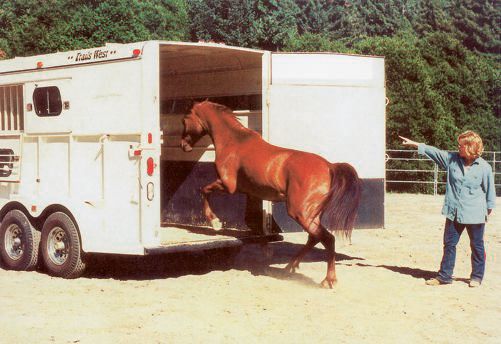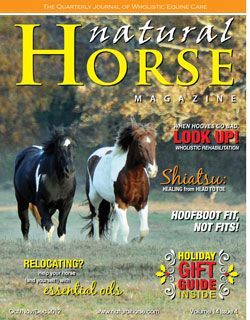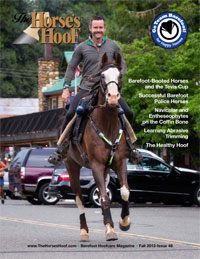The Thinking Horse: Cognition and Perception Reviewed
Evelyn B. Hanggi, MS, PhD
An excerpt ::
Practical applications of positive reinforcement have been researched with respect to the use of these principles to facilitate trailer loading behavior in horses.
Trailer loading the reluctant horse is a common problem and can take hours to accomplish, with hazard to both horse and human. Resistant or frightened horses rear, pull back, kick, paw, and even fall over during the ordeal: these behaviors are reinforced when owners fail to load them and give up. Traditional loading methods are based on negative reinforcement (often with a measure of punishment thrown in). Ferguson and Rosales-Ruiz19 found that, with positive reinforcement and target training, horses learned to load willingly, improper behaviors disappeared, and these effects generalized to novel situations. Although those of us who regularly use positive reinforcement and target training—for trailer loading (Fig. 3) and unloading, lifting feet for hoof care, groundwork, standing quietly for grooming and veterinary handling, overcoming fear or resistance, and research procedures—advocate this approach, more research and public demonstrations are needed to educate horse handlers on the techniques and efficacy of these methods. Ideally, trainers and handlers should incorporate intelligent use of both positive and negative reinforcement into a well-balanced program.
I will be demonstrating the use of this at FULL CIRCLE EQUESTRIAN CENTER on June 30th and July 1st. June 30th will be introducing the horse to Clicker Training and July 1st will be Trailer Loading using Positive Reinforcement.
FULL CIRCLE EQUESTRIAN is located on the BALLARD FARM in Lincoln, RI.
If you’d like more information please contact FCE: http://www.fullcircleequestrian.net/












